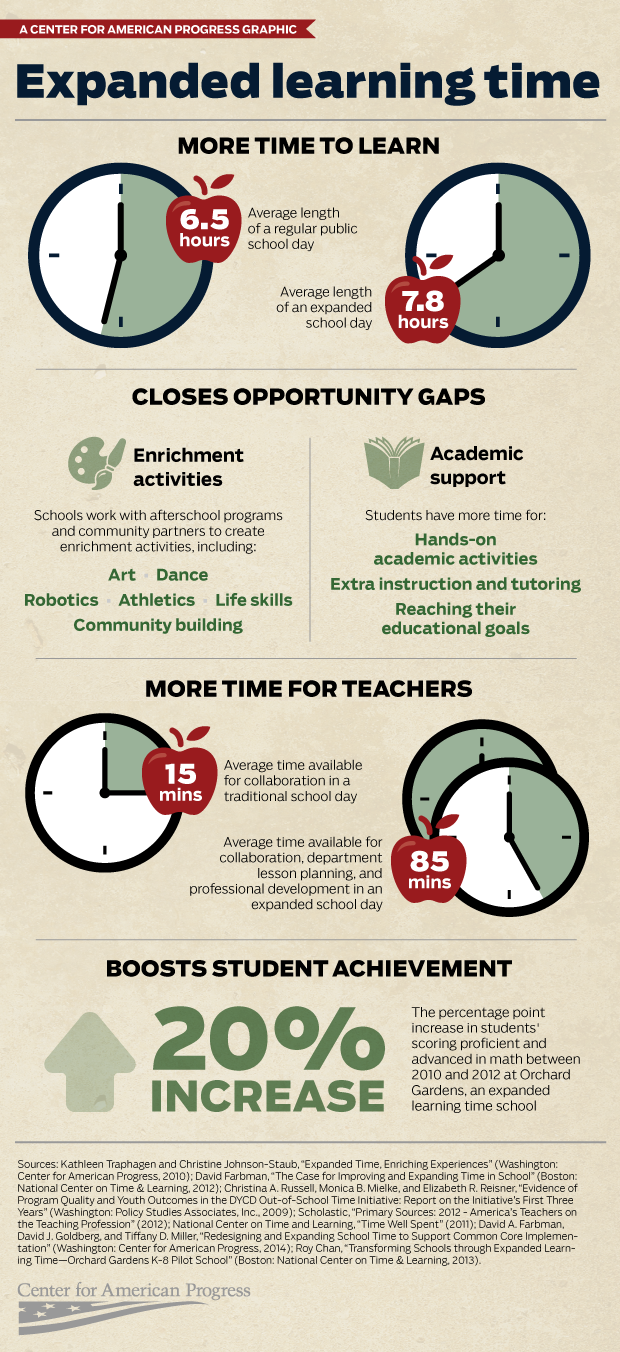Children as young as age 2 from low-income families may already be behind in language development when compared to their wealthier counterparts, and the gap only continues to grow as they enter school. Research has shown that about half of ninth-grade students in high-poverty schools are only reading at a sixth- or seventh-grade level. This is where schools that add more and better learning time can help.
The Center for American Progress has developed a policy definition of expanded learning time. Aimed at high-poverty, underperforming schools, expanded learning is the lengthening of the school day, school week, or school year for all students in a given school by two hours per day, or 300 hours per year. To be effective, the concept of expanded learning time requires the complete redesign of a school’s educational program in a way that combines academics with enrichment for a well-rounded student experience and supports teachers by giving them more time for planning, collaboration, and professional development.
Expanded learning time is a promising strategy for closing both the achievement and opportunity gaps. Here’s how:

Tiffany D. Miller is Associate Director for School Improvement at the Center for American Progress. Julie Zucker was an intern with the Education Policy team at the Center.